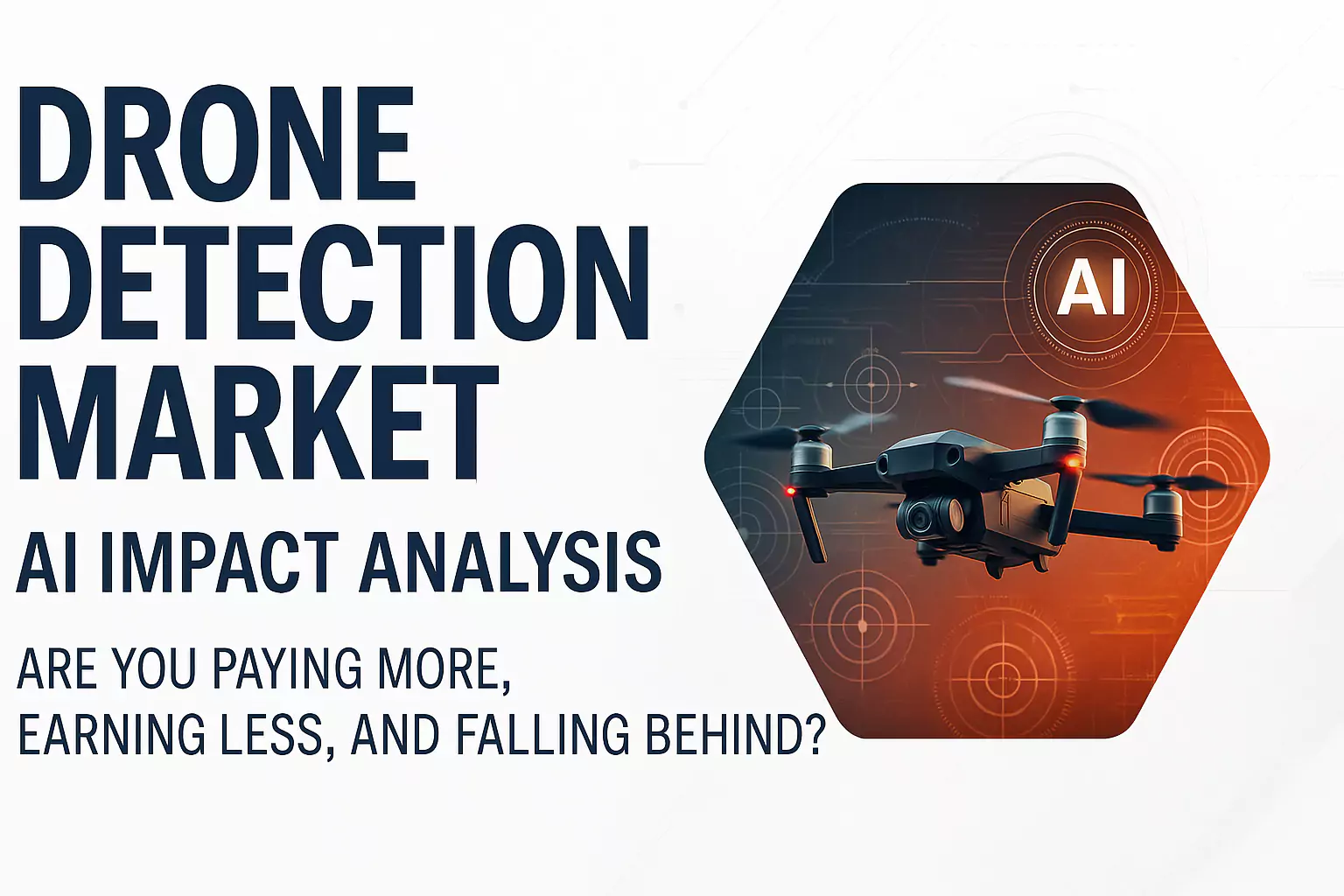AI Impact Analysis on Drone Detection Industry
AI’s Role in Drone Detection
The rapid proliferation of drones across commercial, defense, and recreational applications has led to growing concerns about airspace security and unauthorized drone activity. Artificial Intelligence has emerged as a transformative force in enhancing the capabilities of drone detection systems, equipping them with smarter, faster, and more predictive technologies. As unmanned aerial vehicles become smaller, faster, and more sophisticated, traditional detection methods are no longer sufficient to safeguard sensitive environments. AI-driven systems are now essential in tracking, identifying, and neutralizing potential threats with precision and efficiency.
Market Overview and Growth Prospects
The drone detection market has experienced unprecedented growth over the last decade due to increased drone usage in critical sectors such as defense, infrastructure protection, public events, and airport security. Artificial Intelligence is increasingly being integrated into these systems to analyze large volumes of detection data in real time, identify flight patterns, and distinguish between friendly and hostile drones. AI's ability to automate decision-making processes and improve response times is expected to significantly expand the market’s value in the coming years. As regulatory frameworks for drone usage tighten, the demand for AI-powered detection solutions is anticipated to accelerate.

AI Integration and Technological Advancements
Modern drone detection systems now leverage AI-powered technologies like machine learning, computer vision, and sensor fusion to enhance accuracy and reliability. AI algorithms enable systems to classify drone types based on size, flight characteristics, and radio frequency signatures. Integrating AI with radar, optical sensors, and RF detectors allows for multi-layered surveillance and threat detection in complex airspace environments. These advancements help reduce false positives, improve identification rates, and optimize countermeasure deployment strategies.
Applications in Civil and Military Environments
The applications of AI-powered drone detection extend from civilian infrastructure protection to military surveillance and counter-UAV operations. In civilian contexts, AI enhances the safety of airports, stadiums, government buildings, and industrial facilities by providing early warnings against unauthorized drones. In military operations, AI aids in protecting bases, borders, and strategic assets by automatically detecting, tracking, and classifying incoming threats. These intelligent systems can be connected to counter-drone technologies like jammers or interceptors for automated threat neutralization.
Impact on Regulatory Frameworks
As drone detection systems become more advanced, AI is playing an important role in aligning detection practices with evolving regulatory requirements. AI’s ability to analyze flight patterns and enforce no-fly zones supports compliance with national and international drone regulations. AI-powered systems can provide authorities with actionable intelligence, helping to shape policies for drone activity monitoring and incident response protocols. This technological alignment is crucial for maintaining secure airspace while promoting the safe integration of drones into commercial and civilian applications.
Get AI Impact Analysis on Aircraft Lighting Industry, Request Pdf Brochure: https://www.marketsandmarkets.com/pdfdownloadNew.asp?id=199519485
Enhancing Real-time Decision-Making
AI enhances decision-making processes by analyzing data from multiple sources and generating actionable insights in real time. Drone detection systems powered by AI can prioritize threats based on proximity, size, and behavior, enabling security personnel to allocate resources more effectively. By reducing human dependency in critical moments, AI significantly improves response times and operational efficiency. This is particularly valuable in high-risk situations, where delays in detection and classification can lead to substantial security breaches.
Reducing False Positives and Operational Costs
One of the major challenges in drone detection is the occurrence of false positives, where birds or harmless aerial objects are mistakenly identified as drones. AI-driven detection systems mitigate this issue by using pattern recognition, behavior analysis, and data cross-referencing to improve accuracy. Reducing false alarms not only enhances operational efficiency but also minimizes the cost associated with unnecessary deployments and interventions. Over time, this leads to more sustainable and cost-effective drone detection operations.
AI-powered Counter-UAV Systems
AI integration is also advancing the capabilities of counter-UAV systems, which are designed to neutralize rogue drones once detected. These systems use AI to predict drone flight paths, assess threat levels, and determine the most appropriate countermeasure strategy, whether it involves jamming, interception, or physical capture. The ability to automate these processes ensures rapid and proportional responses, reducing human error and enhancing airspace security in dynamic environments.
AI in Data Analytics and Threat Prediction
Beyond real-time detection, AI is revolutionizing the way data from drone detection systems is processed and analyzed. AI algorithms can identify long-term patterns in drone activity, uncover trends in unauthorized airspace incursions, and predict potential future threats based on historical data. This predictive capability supports proactive security planning and helps organizations anticipate security challenges before they occur. Data analytics powered by AI also assists in refining detection protocols and optimizing resource allocation.
Future Trends and Market Outlook
The future of the drone detection market will be heavily influenced by the continued integration of Artificial Intelligence. Innovations such as AI-enhanced swarm detection, edge computing, and autonomous response systems are expected to redefine airspace security strategies. The increasing adoption of AI in urban air mobility and smart city infrastructure will further drive demand for intelligent drone detection solutions. As governments and enterprises prioritize airspace security, AI will remain a critical enabler of efficient, scalable, and adaptive detection frameworks.
Related Report:
Drone Detection Market by Technology (Radar, RF Scanner, Optical), Application (Critical Infrastructure, Airport, Stadium, Prison, Power Plant, Oil & Gas, Border Security, Military), Type (Ground-Based, Handheld), Range and Region - Global Forecast to 2029
This FREE sample includes market data points, ranging from trend analyses to market estimates & forecasts. See for yourself.
SEND ME A FREE SAMPLE





